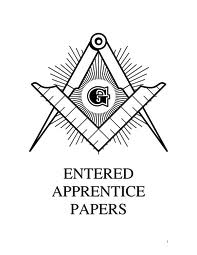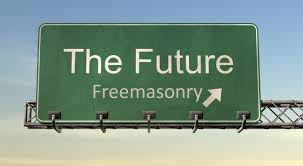THE WORKING TOOLS IN THE MASTER MASON DEGREE (Ancient Workings)
By: R.W.Bro. Kenneth Melsted; Published in THE TRACING BOARD, G.R.S,
1966 and 1988.
The Ancient Workings Ritual states “The Working Tools of a Master Mason are
all the tools in Masonry indiscriminately but more especially the TROWEL”
To begin, I will first provide you with the definition of the TROWEL as
provided in The Lexicon of Freemasonry by Albert G. Mackey. It is, in part,
as follows:
“An implement of operative Masonry, which has been adapted by speculative
Masons, as the peculiar working tool of the Master’s Degree”
By this implement, and its use in operative Masonry to spread the cement
which binds all the parts of the building into one common mass, we are
taught to spread the cement of affection and kindness, which unites all the
members of the Masonic family, wheresoever dispersed over the globe into one
companionship of Brotherly Love, Relief and Truth.
THE TROWEL
The Trowel is an important symbol and working took in Craft Masonry in many
parts of the world, although it has become obsolete in England and in those
rituals based on English workings.
However, the Trowel was still being used in England in the 18th Century,
when Masonry was being spread abroad, and, perhaps, as a result, American
Lodges still use it as the only “Working Tool” in their Master Mason’s
Degree.
An early English book, Preston’s Illustrations of Masonry dated 1792, says:
“The Trowel is mentioned as one of the things presented to the W.M. on his
installation.”
But when the ritual was revived in 1813 the trowel appears to have been
dropped from the English craft Masonry altogether and is now completely
obsolete in the system.
However, in Scotland today (1966) the Trowel is used as the collar jewel of
the Junior Deacon, and the Grand Junior Deacon also wears this jewel as part
of his regalia.
They explain the use of the Trowel this way: “The Trowel teaches that
nothing can be united without proper cement, and the perfection of the
building depends on the suitable disposition of the cement. So Charity, the
bond of perfection and social union, must unite separate minds and interests
that, like the radii of a circle which extend from the centre to every part
of the circumference, the principle of universal benevolence may be diffused
to every member of the community.”
“As it is used by the operative Brother to spread cement which unites the
building into one common mass, so the Freemason uses the Trowel
emblematically for the noble and glorious purpose of spreading the cement of
brotherly love and affection, that cement which unites the members of the
fraternity into one sacred band or society of Brothers among whom no
contention should ever exist.”
However, in the Scandinavian countries, all Masons in Craft Lodges wear the
Trowel as a jewel.
Entered Apprentices and Fellowcrafts wear a silver Trowel and Master Masons
wear a gold Trowel.
These countries use two sets of Working Tools, both sets being explained in
the First Degree.
The first set consists of the square, level, and plumb rule. The second set
consists of the Trowel, hammer and compasses. The Trowel is also well known
in European Masonry.
In one French working, (if not more) the candidate in the Fellowcraft Degree
is made to take five ‘voyages’ around the Lodge and on each ‘voyage’ carries
a different Working Tool, namely the mallet and chisel, the square and
compasses, the rule and crowbar, the level, and on the fifth and last
‘voyage’, the Trowel.
In U.S. Lodges, and, in those Canadian Lodges which have taken their ritual
and form from the various American states, the Trowel is the only Working
Tool used in the Third Degree.
To quote Mackey’s Encyclopedia:
“This implement is considered the appropriate Working Tool of a Master
Mason, because, in operative Masonry, while the Apprentice is engaged in
preparing the rude materials, which require only the gauge and gavel to give
them their proper shape, the Fellow Craft places them in their proper
position by means of the plumb, level, and square; but the Master Mason
alone, having examined their correctness and proved them true and trusty,
secures them permanently in their place by spreading, with the Trowel, the
cement that irrevocably binds them together.”
Robert Macoy, in his book, The Masonic Ritual, informs us that
“the Trowel is an implement made use of by operative Masons to spread the
cement which unites the building into one common mass; but we, as Free and
Accepted Masons, are taught to make use of it for the more noble and
glorious purpose of spreading the cement of brotherly love and affection;
that cement which unites us into one sacred band, or society of friends and
brothers, among whom no contention should ever exist, but that noble
contention, or rather emulation, of who best can work, and best agree.”
This charge, as Macoy gives it, has remained relatively unchanged to this
day, and is still used by most American and some Canadian Lodges.
The Trowel has been, and still is, a respected Working Tool in the Craft
throughout much of the world and, even though we may not use it ourselves,
it may still provide us with much symbolism on which to moralize.






You must log in to post a comment.